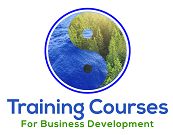 The world of Education is constantly evolving, and recent technological advancements have significantly impacted how we teach, learn, and interact with educational content. One of the most significant trends shaping the future of Education is the integration of e-learning and immersive technologies. Nowadays, it’s essential to understand how these developments will transform the learning landscape and create new opportunities for growth and innovation. This article will explore the role of e-learning and immersive technologies in transforming learning experiences, providing real-world examples and use cases.
The world of Education is constantly evolving, and recent technological advancements have significantly impacted how we teach, learn, and interact with educational content. One of the most significant trends shaping the future of Education is the integration of e-learning and immersive technologies. Nowadays, it’s essential to understand how these developments will transform the learning landscape and create new opportunities for growth and innovation. This article will explore the role of e-learning and immersive technologies in transforming learning experiences, providing real-world examples and use cases.
The Rise of E-Learning
Over the past few years, e-learning has become an increasingly popular method of Education, driven by the widespread adoption of Internet access and the growing need for flexible learning options. E-learning encompasses various online learning platforms, including massive open online courses (MOOCs), video lectures, and interactive educational content. E-learning offers several advantages over traditional classroom-based Education, including:
1. Flexibility: With e-learning, students can access educational material anytime, anywhere, allowing them to learn at their own pace and schedule.
2. Personalization: E-learning platforms often provide personalized learning paths tailored to each student’s needs and learning style, fostering a more effective learning experience.
3. Cost-effectiveness: Online courses typically cost less than in-person, making Education more accessible to a broader audience.
One example of e-learning’s transformative impact can be seen in the rapid growth of MOOC platforms such as Coursera, edX, and Udacity. These platforms offer courses from top universities worldwide, making quality education accessible to millions of learners who would otherwise not have the opportunity to attend these institutions.
Immersive Technologies: Taking Education to the Next Level
Immersive technologies, such as virtual reality (VR), augmented reality (AR), and mixed reality (MR), are revolutionizing the way we interact with digital content. These technologies enable users to fully immerse in digital environments or digital overlay content in the real world. In Education, immersive technologies can create highly engaging, interactive, and memorable learning experiences.
Some examples of immersive technology use cases in Education include:
1. Virtual field trips: VR can transport students to distant locations, historical sites, or even inside the human body, providing immersion and interactivity impossible with traditional teaching methods. For instance, Google Expeditions allows students to explore the world’s most famous landmarks and natural wonders without leaving the classroom.
2. Hands-on training: AR and MR can provide real-time guidance and support for practical skills training. For example, medical students can use AR applications to practice complex surgical procedures on virtual patients, enhancing their skills and confidence before working with real patients.
3. Collaborative learning: Immersive technologies can facilitate collaboration among students, both locally and globally. Platforms like Rumii enable students to meet in virtual classrooms to interact with 3D models, diagrams, and other multimedia content in a shared virtual space.
 E-learning and immersive technologies have the potential to revolutionize the future of Education, offering more flexible, personalized, and engaging learning experiences than traditional classroom-based teaching. As technology continues to evolve, professionals in all fields must understand these emerging trends and their implications for the educational landscape. By embracing these innovative tools and methods, we can create a more inclusive and effective learning environment for future generations.
E-learning and immersive technologies have the potential to revolutionize the future of Education, offering more flexible, personalized, and engaging learning experiences than traditional classroom-based teaching. As technology continues to evolve, professionals in all fields must understand these emerging trends and their implications for the educational landscape. By embracing these innovative tools and methods, we can create a more inclusive and effective learning environment for future generations.
HJK


